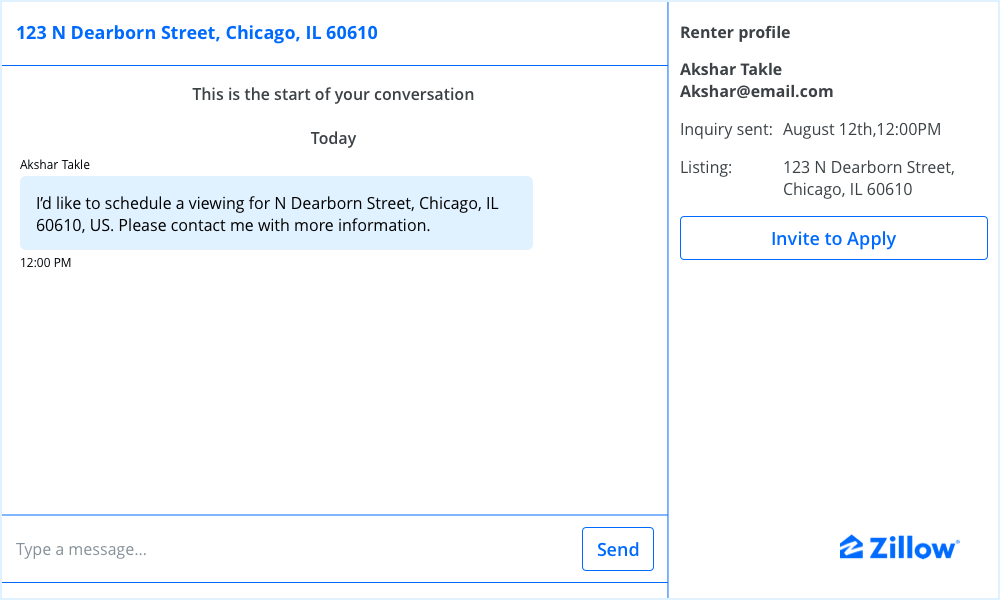
The job of residential property manager is multifaceted and can prove challenging. A residential manager must know the laws of their locality, be skilled in solving problems, and have the required skills. These professionals are responsible for coordinating tenants with land owners and other parties involved in the rental process. They are responsible of setting rental rates for the property, marketing it, screening tenants, and negociating lease terms.
There are many routes to this field. One way is to become an accredited property manager. This requires attending classes, passing a test, and completing a series of courses. A licensed manager must ensure that rent payments are being collected and followed up.
Another alternative is to hire an individual property manager. Individual property managers can be more hands-on and willing to come up with creative solutions to clients' problems. However, they are more expensive than other managers.
Good property managers are essential for maintaining your property's condition. The ideal property manager will be able make repairs, screen potential tenants and coordinate maintenance issues. They will be able suggest good legal counsel and know the legal aspects of renting an apartment.

Most residential managers are hired by homeowners, landlords, and condominium associations. They offer a variety of services, from one-person operations to large companies with hundreds of employees. Property managers will coordinate and oversee maintenance, screening tenants, as well as all aspects of maintaining a building's administrative functions.
There are many benefits to larger companies that can take advantage of economies on scale. This is particularly true when managing multiple properties. It is a smart idea to partner with a management company that has many resources and expert knowledge.
They can offer a better customer experience. They will also have an expanded team of people to manage their day-today operations. They will also be able to offer competitive pricing.
Some property managers have their own maintenance staff. Others hire contractors to perform repairs. It doesn't matter what type of contractor you use, it is crucial to keep track and pay taxes.
Finally, a great residential manager will know how to best market your property. If you want potential tenants to come to your property, make sure to have images that are appealing to them. Moreover, you will need to show them all the amenities of the building.

You can have the advantages of owning a property with the help of a professional. Not only will they be able to find a tenant for your property, they will be able to collect rental income and keep you informed of any problems that might crop up. You can rest assured that your investment is in good hands.
Look for property managers jobs by consulting local agents. They can help locate the right jobs for you based on your skills. Search online for jobs in your area.
FAQ
Who will manage my handyman task?
If you are looking for someone local to perform a one-off job, like replacing a light fixture or fixing a leaky faucet, you won't find a better price than a professional handyman. Handyman services might be an option for you if you have several jobs to complete, such a roof repair or new floor tile installation.
Handyman Services, a handyman service, can provide you with ongoing support like maintenance.
Which is more difficult: being a contractor or a handyman.
A handyman does not require as much resources as contracting. You only need to have your tools. However, you must be able to manage your own workload and schedule, while contractors typically rely on subcontractors to do most of the work.
How do I find a trustworthy handyman?
Before hiring a handyman you should always verify their references. Ask family and friends who have worked with him or her before. Look online too - there are many sites where handymen leave reviews.
Statistics
- “Once the pandemic hit, that number fell to about 20%.” (inquirer.com)
- More than 20% of homes in America have outdoor living spaces, including decks and patios. (mrhandyman.com)
- With a strong housing market, the handyman and general maintenance worker industry are expected to grow by nearly 10% in the next decade. (housecallpro.com)
- “Before the pandemic, 40% of people asked how we could estimate a job when we weren't there,” Rose recalled. (inquirer.com)
- Mila keeps a commission of 20% for each completed service performed by Friends and charges various service fees regarding work done by Pros. (appjobs.com)
External Links
How To
How to replace a broken tile
Step 1: Remove the old tiles.
Removing the tiles from your flooring is a good idea. You'll want to keep these intact if you use them later. Note which pieces are missing or damaged to avoid having to search for replacements.
Step 2: Choose New Tiles
You can take a look at the different options for tile replacement.
-
Find a new tile that's similar to the one you removed.
-
To find the matching piece, use the measurements that you took while removing the tile. This will allow you to quickly find the right size, without having to measure again.
-
You should look for different colors, patterns and textures.
-
Consider what grout you prefer to use. Some people prefer to use a single color, while others love mixing it up.
-
Choose a tile that resists moisture.
-
Make sure you consider where your tile will be placed. It can help you save money and time.
-
Once you've found the tile that suits your needs, you can place your order online.
Step 3 - Install the new tiles.
To install your tiles, follow the same procedure as before. Make sure they are aligned correctly so that they fit together perfectly.
Step 4 – Clean up
Be sure to vacuum up all crumbs and debris before applying the last layer.
This will prevent dust and dirt from building up between the tiles.
Step 5 - Sand Down the Floor
After you have cleaned everything, sand the floor to remove any particles that were left from the previous step.
Step 6 -- Finish Off
Once the floor has been completely smoothed, apply the protective coatings on the tiles. Wait until the floor is completely smooth before applying the protective coatings to the tiles. Wet paint could stain the tiles' surface.
To help prevent stains, you could always use a product called 'damp-anddry' on your floors.
However, it won't cover every possible problem that may occur after you've installed your new tiles. If you have children, an anti-slip coating may be a good idea.
Last but not least, be sure to leave the protective sealing on for several weeks before you return to your home.